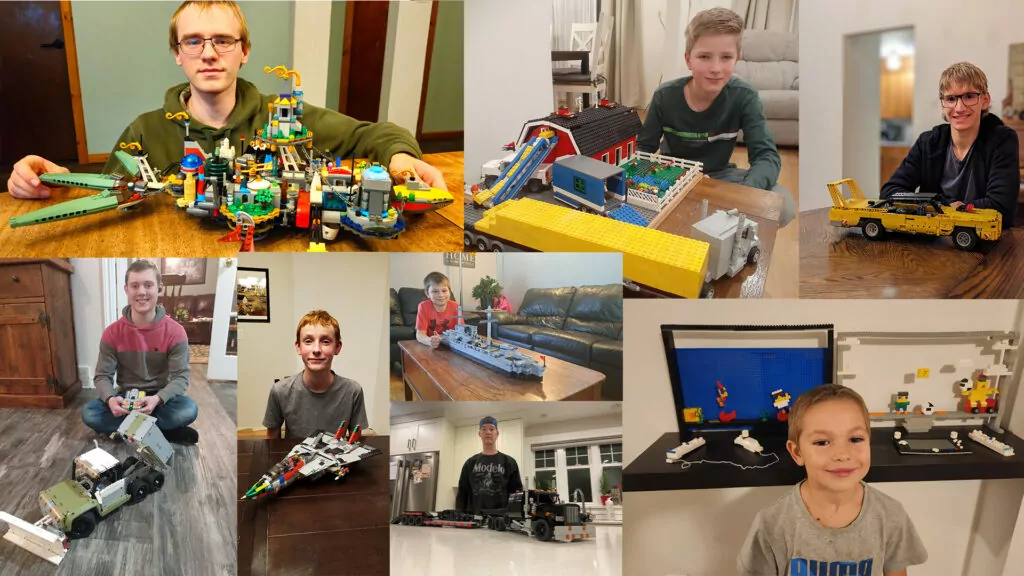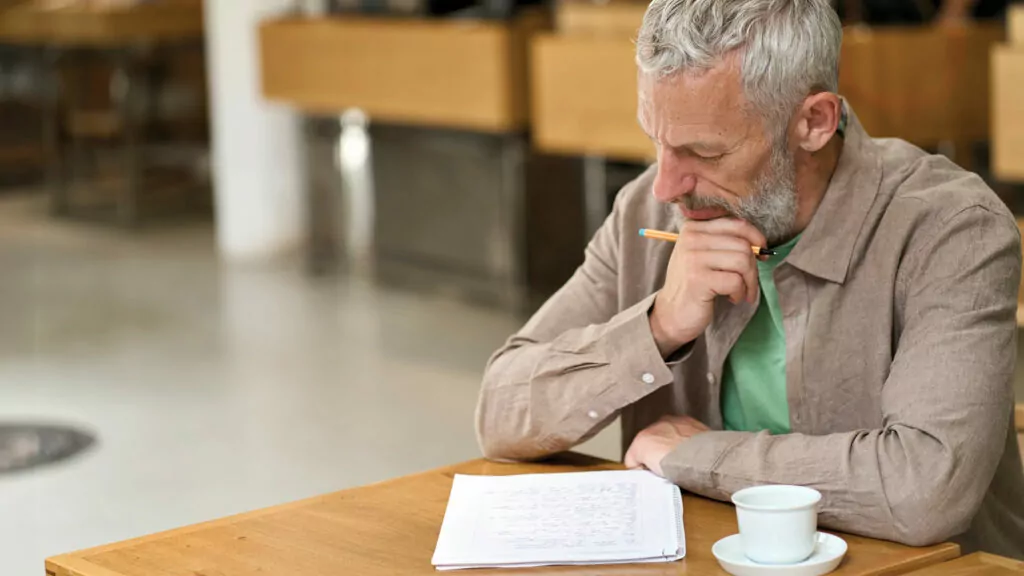
People we should know
Wibrandis Rosenblatt: “Bride of the Reformation”
In Your presence there is fullness of joy (Psalm 16:9-11)
*****
I can vividly recall how, as a child, I visited people with my father. In Holland I would ride in front of him as he peddled his bike across city and country roads in Groningen; in Canada, I sat next to him in the front seat of the car as he traversed the highways of Ontario. Frequently he took me inside as he spent time with members of the congregation. Often I sat quietly in a corner of the room and waited until it was time to go home again.
On one such visit a woman, a godly woman and mother, began to weep as she recounted her fear of going to heaven. This was rather unusual, and unobtrusively seated on a chair in a dimly lit room, my young ears perked up. It turned out that this lady was the second wife of her husband and she was afraid that in heaven he would love the first wife more than herself. My father pointed out that there was no marriage in heaven and that, after all, men and women were souls. He spoke of being too caught up in the present – in our physical bodies, our intimacies, and our friendships – and that the focus of dying was to be with Jesus. Your relationship with your husband, he stressed time and again, will be far better in heaven than it is now, difficult as that may be to understand.
The strange thing is that there are many women (and men) who worry about such a situation as has just been described. Another godly woman, Mary, (as a matter of fact, I think she was one of the godliest women I ever met), was quite anxious about meeting her husband and her sister after death. Prior to the Second World War, Mary's older sister, married to a pastor, had contracted consumption. Because she loved her sister dearly, Mary had volunteered to help out with her little nieces and nephews, with the cooking and cleaning, and with the nursing. No matter - in the end her sister died. Consequently, as often happened in such cases, she shortly afterwards married the widower. How else could this single-parent family have survived? Mary loved her sister's husband, who was now her own husband, passionately and bore him two more children. They were married for more than fifty years before he died of a heart attack. When I met her she was an old woman, beloved by her stepchildren as well as her own children and spoken of with respect and affection by all who knew her. She had led a virtuous, unselfish life. Yet this lady was bothered exceedingly by one point – whom would her husband love more in heaven: her sister or herself?
Perhaps our concept of love for God and eternal life is often focused too much on individual salvation. The truth taught in Scripture is that everlasting union with our Lord Jesus Christ, as well as perfect unity with all His elect, will be fulfilled in heaven. In this world with our feeble minds and bodies, it is hard to contemplate what it will be like to “shine like the sun in the kingdom of the Father” (Matt. 13:43). Here we use methods to try and appear sweet, good-looking and kind to others, but in heaven we will shine in a way that does not come from brand-name clothes, make-up, or vitamin supplements. No, we will have attained a holiness that will reflect the love of God – and we will love all those we see and meet with a most holy, tender and perfect love and they, in turn, will love us.
Ludwig Keller
Wibrandis Rosenblatt, sometimes referred to as the “Bride of the Reformation,” was born in 1504 in Bad Sǟckingen, Germany and raised in Basel. Her father was in the Austrian army in the service of the Emperor Maximilian. He wasn't home much and perhaps that is why Frau Rosenblatt moved back to Basel with her young daughter, back to the place where her family was quite prominent. Taught the housekeeping arts by her mother, Wibrandis was a lovely young girl, one any man would be proud to wed. She was married before she was twenty to a Basel craftsman by the name of Ludwig Keller. Ludwig Keller was a humanist. But both he and Wibrandis were thrilled when a little daughter, named Wibrandis after her mother, was born to them. Yet God in His wisdom cut Ludwig's life short before the couple had been married two years.
Oecolampadius
 Oecolampadius
Oecolampadius
Before two years had passed, Wibrandis received a second offer of marriage, this from a man twenty-two years older than herself – a man by the name of Johannes Hausschein. Hausschein's hellenized name was Oecolampadius and he was the pastor of St. Martin's church in Basel. In addition to being a pastor, he was also a professor of theology. A scholar, well-versed in Greek and Hebrew, he had assisted Erasmus in the publication of his edition of the New Testament. Oecolampadius was a man set in his ways, a man who liked to have his home run smoothly and his mother had always seen to it that it did. When she died, however, he was urged by other Reformers to marry. After much contemplation, and in spite of the fact that he had taken a vow of chastity early on in his career, he opted in favor of marriage, (although criticized severely for this by Erasmus), for the sake of Protestantism. Wibrandis, a widow with a little girl to raise, accepted the much older man's offer in the spring of 1528. She was twenty-four and he was forty-five.
Wibrandis bore her second husband three children, all of whom were given Greek names – Eusebius, Irene and Aletheia – meaning piety, peace and truth. Shortly after his marriage Oecolampadius wrote to his friend Farel:
In case you have not heard, let me tell you that in place of my deceased mother the Lord has given me a sister and wife, adequately Christian, not exactly affluent, well-born, a widow with several years experience in bearing the cross. I wish she were older but I see in her no signs of youthful petulance. Pray the Lord to give us a long and happy marriage.
A year later he wrote to another reformer and friend, Wolfgang Capito:
My wife is what I always wanted and I wish for no other. She is not contentious, garrulous, or a gadabout, but looks after the household. She is too simple to be proud and too discreet to be condemned.
Oecolampadius was obviously happy in marriage. Yet his earthly bliss was not to last. He fell ill. In November of 1531 he gathered his very young children around him and spoke to each of them. Someone asked whether the light above the bed was too bright for him. He smiled, struck his chest and said: "Here's light enough within." He died shortly afterwards and Wibrandis was widowed for a second time – this time with four little children in her care, as well as her aging mother.
Wolfgang Capito
 Wolfgang Capito
Wolfgang Capito
Around the same time that Oecolampadius died, the wife of another prominent Reformer, Wolfgang Fabricius Koepful, (better known as Capito) died also. Capito was advised, even as Oecolampadius had been advised, to remarry. He was at that time the dean of the church of St. Thomas in Strasbourg. There were those who suggested that Wibrandis, the widow of Oecolampadius had been a chaste and suitable helpmeet and would she not be a lovely companion and wife for Capito as well? The counsel of godly men prevailed in the life of Capito and he proposed to Wibrandis who accepted. In August of 1532 she married for the third time. She brought with her four children and her mother. Wolfgang Capito was fifty-four years old to her twenty-eight years of age. Wibrandis bore Capito five children - three girls and two boys.
Wibrandis was a good wife for Capito. She balanced his budget, (something which had been a problem), kept the household running smoothly, entertained friends and mended his clothes. There were the occasional bouts of sickness but none were so awful and horrifying as the plague of 1541 when two and a half thousand died in Strasbourg. The son of Oecolampadius, Eusebius, died of it, as well as two of the children of Capito and Wibrandis. Capito himself was also stricken and died. Wibrandis was widowed for the third time.
Elizabeth, the wife of Martin Bucer, another reformer who lived in Strasbourg, also succumbed to the plague. On her deathbed she was informed that Capito had died and that Wibrandis was widowed. Elizabeth, a former nun, had borne her husband thirteen children of whom only five were alive at the onset of the plague outbreak. Four of these last five had just died of this disease. Knowing that she would shortly be gone as well, Elizabeth summoned both her husband and Wibrandis to her bedside. Wibrandis, having just been widowed hesitated about being seen in public but could not refuse to come to a dying friend's bedside. She came to the Bucer house in the evening. Elizabeth Bucer, looking steadily at the man and woman standing at her bedside, appealed to her husband to remarry and to Wibrandis to take her place in the Bucer household.
Martin Bucer
 In April of 1542 Wibrandis Rosenblatt and Martin Bucer were married. Martin was Wibrandis' senior by thirteen years. The marriage contract read that they married for: “the furtherance of the glory of God and the upbuilding of the Christian church.” Bucer wrote at this time:
In April of 1542 Wibrandis Rosenblatt and Martin Bucer were married. Martin was Wibrandis' senior by thirteen years. The marriage contract read that they married for: “the furtherance of the glory of God and the upbuilding of the Christian church.” Bucer wrote at this time:
Although I am past the age suited to marriage, I have nevertheless, in view of my circumstances and office, decided to follow the advice of my brothers and to marry the widow of Capito. As my response to the illegitimate canon laws about a second marriage, (digamy), I would point to the law from Ezekiel 44 which does permit a priest to wed the widow of a priest. She still has four children: a girl from Oecolampadius, and a boy and two small girls from Capito. The latter, as you know, did not leave her much on account of the tough luck he had with his money loans but thanks to the aid of Wendelin Rihel there is a little money with which to support her. As long as God gives me life and my income, we will keep that money – however small the amount will be – for the orphans and we will treat them as our own children. My motives for taking this step are (1) loneliness and (2) the danger which exists if a person starts a household with someone he does not know. Further, there is the virtuous character of this widow and the love I owe to the orphaned children of the man who made himself so useful to me. Pray the Lord for us so that our plans may be approved by Christ and be of benefit to His church.
Later he wrote of his second wife,
...Wibrandis has proven to be pure, honorable, faithful and godly as well as a diligent helper... and has a gift for ministry as for many years she demonstrated in her marriage to those two precious men of God, Oecolampadius and Capito.
He compared his two wives and said:
I am even a little afraid of my excellent wife's tendency to be overly accommodating in my direction. My first wife felt somewhat more free to admonish me and now I realize that that freedom of hers was not only useful but necessary. Aside from her excessive diligence on my behalf and her accommodating attitude, my present wife leaves nothing to be desired; yet, O how strong still is my yearning for my deceased wife – that first marriage, so reverently contracted struck such deep roots in me.
In 1549 Martin Bucer was appointed professor of divinity in Cambridge, England. He traveled down there ahead of his family. It was a cold country and by the end of 1549 the whole Bucer household had arrived. The climate was hard on Martin's health. He updated his will noting that, should he die, Wibrandis would do fine on her own, but that he felt she should remarry. In 1551 Bucer died, worn out by hard work and by the harsh, rainy and damp days of Britain. King Edward VI awarded Wibrandis 100 marks for services rendered to the Church of England.
Wibrandis did not remarry but eventually returned to Basel, the place where she had been raised by her mother. Another decade would pass before she died, in 1564, of the plague.
And in heaven whose wife shall she be? Is the answer not simple? She always was and also will be there, the bride of Christ.
This first appeared in the April 2015 issue under the title “In Your presence there is fullness of joy.”






























